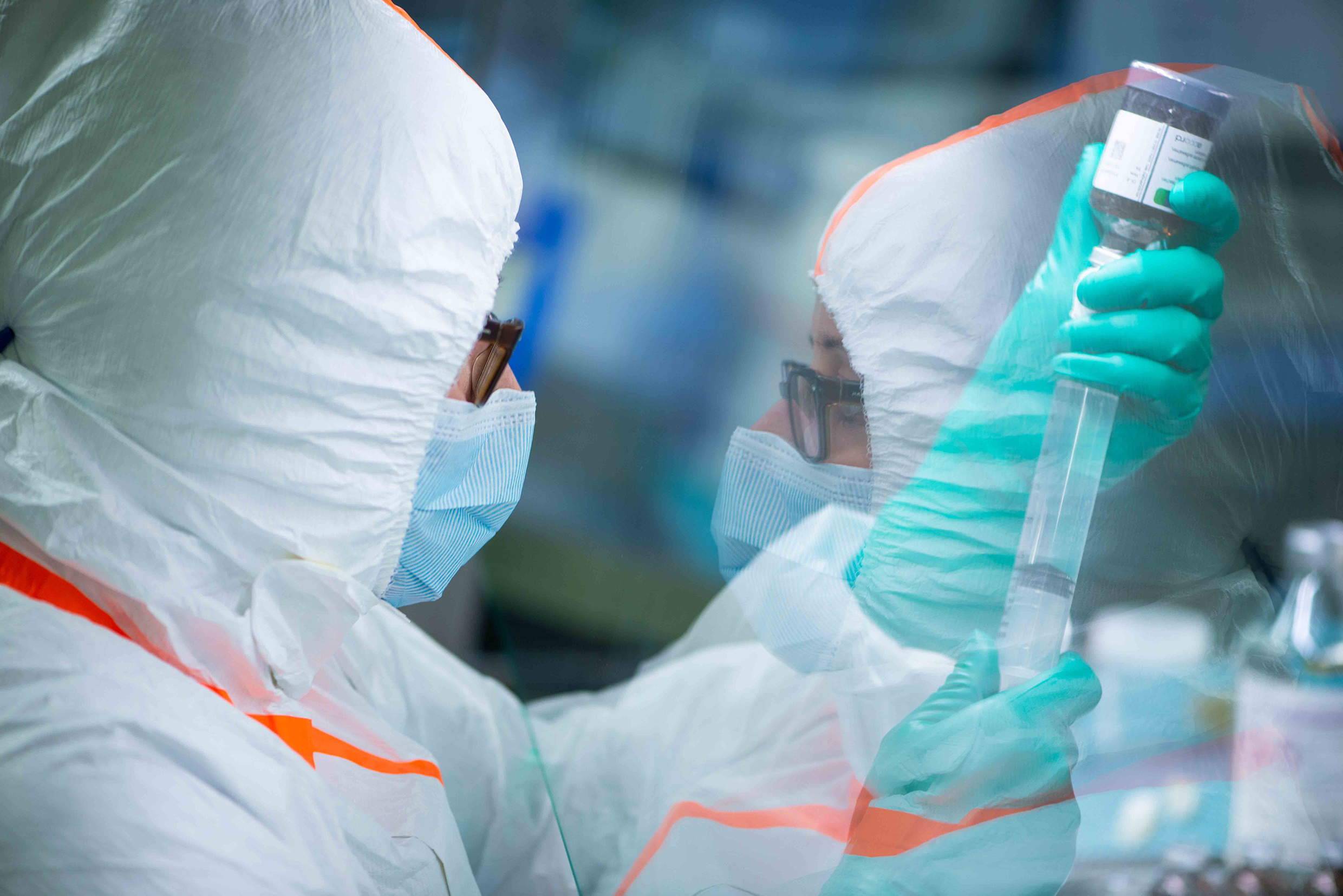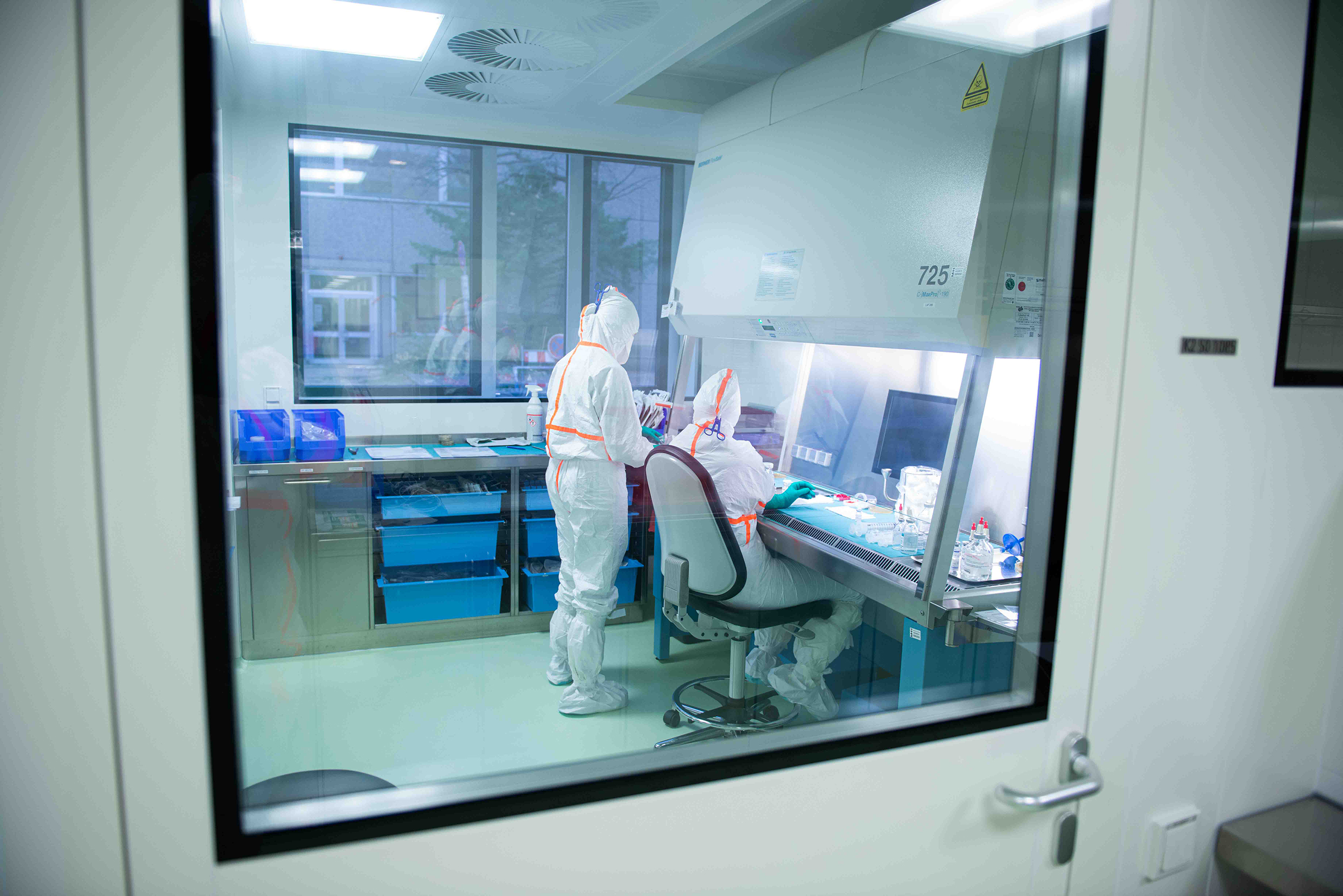The MHH is one of the first institutions in Germany to be allowed to perform a new innovative treatment for hemophilia A and B.

A lot of responsibility: a member of staff at the MHH pharmacy working in the clean room. Copyright: Anna Junge/medjunge.de

Special hygiene conditions: the drug for gene therapy is produced in a so-called clean room. Copyright: Anna Junge/medjunge.de
Cell and gene therapies are on the rise. This is a new ray of hope for people with previously untreatable or hardly treatable diseases. Another novel therapeutic method is now being added: gene therapy for hemophilia. The Hemophilia Center at the Hannover Medical School (MHH) is one of the first in Germany to be allowed to perform this gene therapy for hemophilia A and B. In the future, it will not only treat its own patients, but also those affected at other hemophilia centers in Lower Saxony. A special collaboration between the centers is planned – patients will receive the gene therapy in the form of an infusion at the MHH, while the pre- and post-operative care and long-term care will be provided jointly in close consultation.
A clotting factor is missing
Hemophilia is a genetic blood-clotting disorder. Sufferers lack a clotting factor, a protein produced in the liver. The best-known forms of hemophilia are hemophilia A and B. In the first, clotting factor VIII is missing; in the second, clotting factor IX. In Germany, about 6,000 people are affected by the disease. Due to the lack of a protein, their blood does not clot or only clots slowly. The tendency to bleed is increased, bleeding takes longer, bruises become larger and occur more frequently. "In severe forms, patients suffer from spontaneous bleeding into the large joints such as the knee, elbow or ankle from childhood on. In the long term, this leads to the destruction of the joints at a young age," explains Prof. Dr. Andreas Tiede, Professor of Hemostaseology and Head of the Hemophilia Center. In addition, people with severe hemophilia are at high risk for cerebral hemorrhage.
Those affected must inject themselves with medication
At the Hemophilia Center at the MHH, around 150 patients with severe coagulation disorders receive long-term care. Until now, those affected have had to inject the missing coagulation factor proteins themselves several times a week – something that most of them learn to do in childhood. However, the coagulation factor in the blood cannot be kept at a constant level through the administration of medication, because the half-life is short. That is why injections are necessary on a regular basis, even when traveling and in every situation in life. Not everyone succeeds in doing this.
Just one infusion
Gene therapy now offers those affected the prospect of an improvement. The therapeutic agent is administered as a single intravenous injection. The gene for coagulation factor VIII or IX then enters the liver cells using a virus shuttle. It remains in the cell nucleus as an episome, which is a small DNA ring, and produces the missing protein there. The success in patients varies. "In the studies, many patients almost achieved normal coagulation and were able to stop their previous therapy. However, it is not yet possible to predict for an individual patient what factor level they will achieve and how long the success will last in each individual case," explains Professor Tiede. He admits that gene therapy is not suitable for all patients. "Some have antibodies against the virus that is used as a ferry. Unfortunately, we cannot offer the therapy to them." In the case of people with liver disease, the MHH Clinic for Gastroenterology, Hepatology, Infectiology and Endocrinology is consulted on a case-by-case basis to determine whether the patient is suitable. Despite the limitations, Professor Tiede considers gene therapy to be a major step forward: "We can measure the effect of the therapy at any time using simple laboratory methods based on blood samples, and thus advise the patient. These are very good conditions for individual care and also for the further development of gene therapy."
Certificate according to ATMP guidelines
Gene therapy for hemophilia falls under the guidelines of Advanced Therapy Medical Products (ATMP). With these guidelines, the Joint Federal Committee (G-BA) regulates the quality requirements for the preparation, implementation and follow-up of gene therapies. Only facilities that meet these requirements are allowed to provide services as part of an ATMP therapy, so that proper, safe and high-quality care is guaranteed. The Haemophilia Centre of the MHH and its partner centres have been certified by the G-BA for gene therapy for haemophilia.
Text: Tina Götting